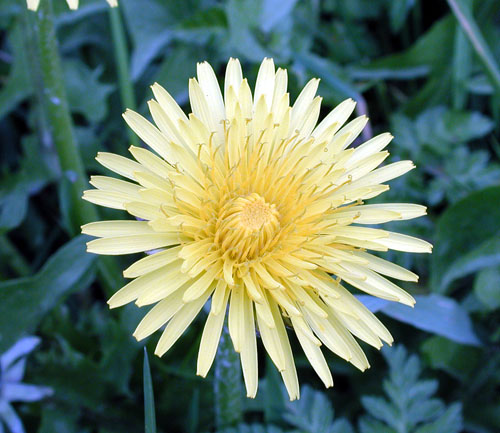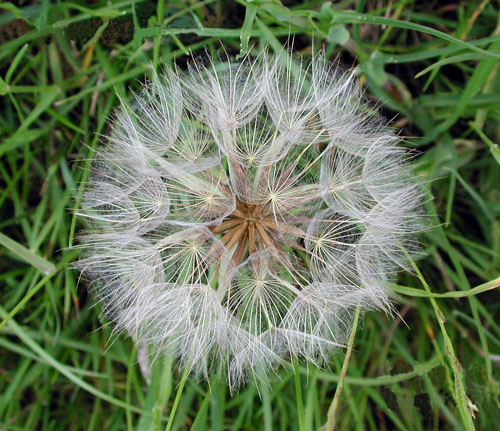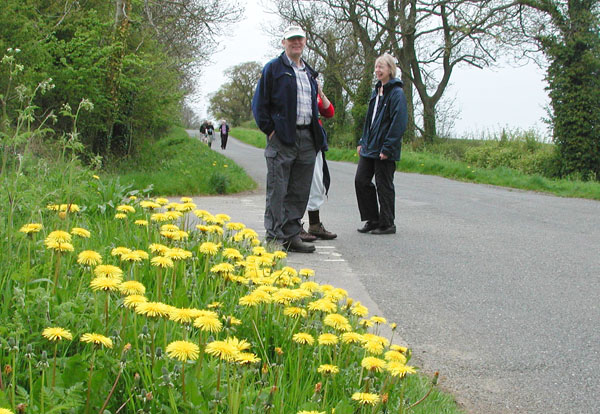
Golden flowers
FLOWER OF THE MONTH - MAY 2008
(Home)
DANDELION (Taraxacum officinale)

Golden flowers

Nature's symmetry in the seeds

Masses of dandelions in the verge of the Weston Road during a village walk
It is surely unnecessary to describe the dandelion, one of the most widely distributed of our wild flowers. In spring its bright yellow flowers light up meadows, pastures, waste ground, roadside verges, in fact any spot where its seedlings can find a resting place. For that reason it is very unpopular with gardeners, as a persistent weed. However, despite its shortcomings, it has many merits.
Its specific name, officinale, indicates its medical usefulness. It has long been known as a herbal diuretic and laxative; this is reflected in several of its localised names, such as piss-a-bed and mess-a-bed!
The dandelion probably has a larger range of local names than any other flower – the botanist Richard Mabey lists 35. Some refer to the spherical clusters of seeds, which drift away like tiny parachutes in the slightest breath of air and which children delight to use to tell the time, hence clock flower, fairy clocks time-teller, twelve o’clock and so on. Shakespeare mentions it, in another guise, in the lines:
Golden lads and girls all must
As chimney sweepers come to dust.
I suppose the seed-heads do look a little like chimney sweeps’ brushes. Other names include golden suns, burning fire, wishes and even devil’s milk pail – because of the milky sap.
The plant has other uses. The strongly toothed leaves (the name dandelion is from the French “dent-de-lion” – lion’s tooth) are a useful addition to salad dishes; we in Britain tend not to use them as much as do the French, who even buy packets of dandelion seeds for their vegetable plots! The flowers of the dandelion are used to make a wine. During the Second World War, when coffee was in short supply, we were recommended to make a coffee substitute from dandelion roots (best dug up in the autumn, scrubbed – but not peeled – dried, roasted and grated). The result apparently tastes very coffee-like, but without the caffeine.
Text by George Metcalfe. Photos by Colin Wootton.